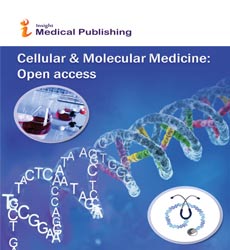Abstract
Type 1 diabetes mellitus (T1DM) results from auto-immune destruction of the insulin secreting ò-cells of the pancreas
Type 1 diabetes mellitus (T1DM) results from auto-immune destruction of the insulin secreting β-cells of the pancreas. The most common treatment is injection of exogenous insulin, but this allows only partial control over blood glucose levels, so other therapies are needed. Pancreatic islet transplantation has shown proof of principle for cell replacement therapy to treat T1DM. There are several sources of cells which could be used, but much of the focus has been on pluripotent stem cells, which are able to self-renew indefinitely in culture and give rise to any cell in the body. Insulin-expressing cells have successfully been produced from embryonic stem cells (ESCs) by recapitulating embryonic development in vitro.
However, problems associated with the use of ESCs mean that an alternative cell source is needed. In 2006, it was discovered that 4 transcription factors can reprogram somatic cells into induced pluripotent stem cells (iPSCs). iPSCs provide an alternative source of pluripotent stem cells and can be derived in a patient-specific manner. iPSCs have been shown to differentiate in vitro into insulin-expressing cells, but it is unknown whether iPSCs are truly equivalent to ESCs. Important differences have been shown to exist between iPSCs and ESCs which may affect the ability of iPSCs to give rise to cells of a pancreatic lineage and therefore limit their usefulness for the treatment of T1DM.
The aim of this problem is to identify whether iPSCs are a viable alternative to ESCs for generating β-cells in vitro for cell replacement therapy to treat type 1 diabetes. The differentiation potential of iPSCs and ESCs to give rise to first definitive endoderm (the first stage in differentiation towards a pancreatic lineage) in vitro will be compared, and the involvement of miRNAs in differentiation of ESCs and iPSCs to definitive endoderm will be investigated.
Author(s):
Darryl Amadeo
Abstract | Full-Text | PDF
Share this

Google scholar citation report
Citations : 187
Cellular & Molecular Medicine: Open access received 187 citations as per google scholar report
Abstracted/Indexed in
- Google Scholar
- China National Knowledge Infrastructure (CNKI)
- Cosmos IF
- Geneva Foundation for Medical Education and Research
- Secret Search Engine Labs
Open Access Journals
- Aquaculture & Veterinary Science
- Chemistry & Chemical Sciences
- Clinical Sciences
- Engineering
- General Science
- Genetics & Molecular Biology
- Health Care & Nursing
- Immunology & Microbiology
- Materials Science
- Mathematics & Physics
- Medical Sciences
- Neurology & Psychiatry
- Oncology & Cancer Science
- Pharmaceutical Sciences

